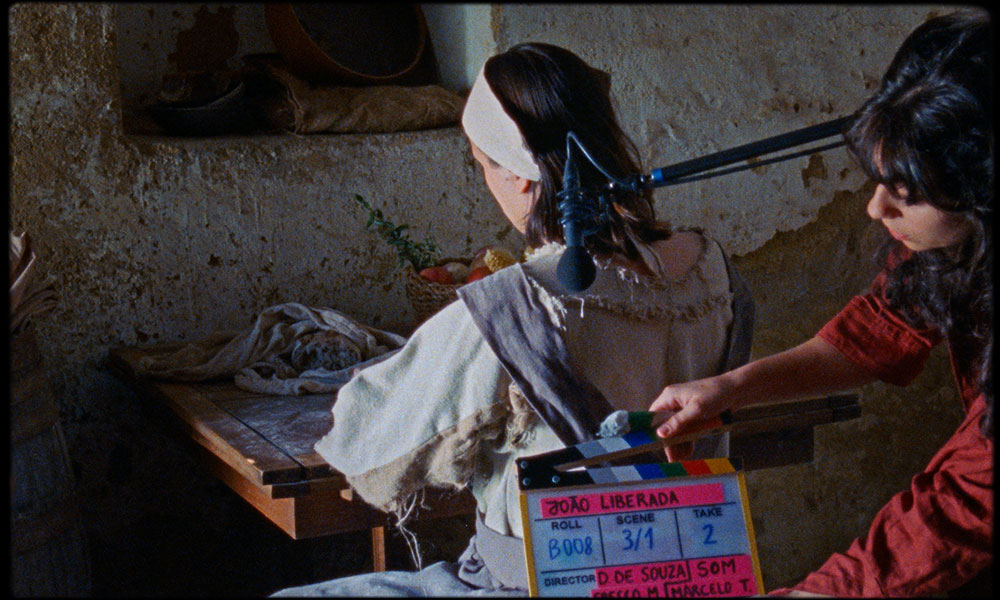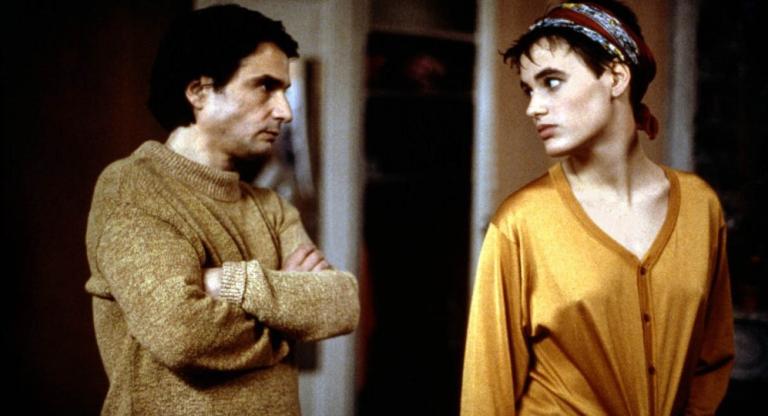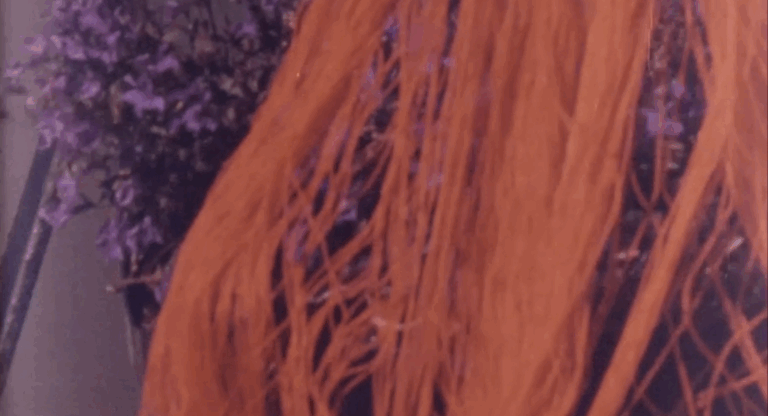The queer art of projection is a tale as old as time. In Paula Tomás Marques’s feature debut, Two Times João Liberada (2024), two trans women across time confront the limitations of patriarchal society. The film follows modern-day João as she plays the original João in a biopic, both played by June João. The gender-nonconforming nun escaped captivity during the Portuguese Inquisition in the 16th century only to seemingly take her own life in an attempt to evade her abusive lover. The saint is fictional, but treated as a historical figure in the film. The spirit of the old João visits the new one throughout shooting, often trying to warn her of something going south. Slowly, the old João ends up taking over the biopic, resulting in a new film: a film about the ghost of João—perhaps the very film we’re watching.
Marques’s direction emphasizes the materiality of the two competing films. There’s the straightforward biopic the cis male director is attempting to make and the film we are watching about the making of that very film. Using direct animation, shifting saturations, black-and-white static shots, still photography, and 16mm film, Marques expands the scope of her playground. Her multimedia approach allows her to play with the disconnect between narrative, text, sound. (When the ghost of the original João interjects over the new João’s obsession with her, she quips through subtitles: “You know we don’t share the same struggles, right?” and abbreviations like “LOL” and “XOXO.”) The four “chapters” reveal the breakdown in the production of the original João’s biopic, which eventually leads to an unknown ailment taking out the previous cis male director. There are, of course, corny moments of friendship and community prevailing over the tyranny of their patriarchal leader, but Marques’s formal play is what truly sets the film apart. It is Marques’s ability to shoot chiaroscuro-like arrangements that sparkle with electric promise that raise the film above its fellow independent contemporaries. Her archival, collage-centered impulses craft a powerful vision of collaboration that is not merely based on erasure or willful misreadings of the past. Toward the end of the film, woodcut-like animations blink over the screen as the actors toil over their shared project.
Whether or not the crew have the right reasons for wresting control of the narrative remains to be seen. Can we ever speak for figures from the past? Especially those that we are so transfixed by that we may begin to blur biography with memoir? As the relationship between martyr, saint, and icon collapses, Marques gently argues that trying to reclaim a “machofemme” as a trans woman may not be canonical so much as it is wishful thinking. It’s impossible to know how the original João Liberada would have identified? In this film, however, she returns as a beam of light, telling off the young João without ever explicitly condemning her. “I’ll still help you,” the ghost says, her voice just static that the subtitles give language to. Are these visions? Possessions? Something else altogether? In one vision, João Liberada says that she is trying to live between he and she, but it is insufficient. She hugs her trans sisters, who tell her to respect herself. At times, these scenes don’t quite cohere. There is a struggle between film and viewer, between actress and role, a battle over narrative control. This gap is Marques’s point, even if the result makes the film choppy at times. (“It has to be more like Bresson. Cleaner,” one dude-bro filmmaker quips during the shoot.) That’s not the narrative that Marques wants; instead, there is ambiguity. Between life and death, fiction and documentary, man and woman. There is a porousness to the film. Who speaks for who and who gets a voice? Such authorial clashes produce a compelling narrative in Two Times João Liberada. There is power in reclaiming a narrative, in telling a new story about a saint reborn.
Two Times João Liberada screens tonight, April 7, at the Museum of Modern Art as part of “New Directors/New Films 2025.” It will also screen on April 8 at Film at Lincoln Center. Director Paula Tomás Marques will be in attendance for Q&As following both screenings.



